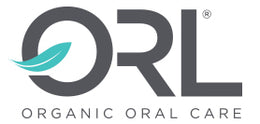In a perfect world, we’d nurture our healthy bacteria, have plenty of mineral-rich saliva, and we’d maintain a neutral pH. In doing so, gum disease and cavities would probably cease to exist. Unfortunately, our habits and the things we expose ourselves to undermine the natural balance our bodies need.
We Take Medications which Reduce Saliva
Medications can be a necessary part of life, but some contribute to dry mouth, also known as xerostomia. Experts list antihistamines, diuretics, antidepressants, antihypertensives, analgesics, and tranquilizers as major culprits. Doctors and pharmacists typically recommend that people experiencing drug-induced dry mouth switch medications, but this isn’t always a possibility. That means teeth don’t get the mineral bath they need, bacteria thrives, and disease usually sets in. It can, however, be treated in a number of ways.
We Create Acidic Environments
Consider, for just a moment, that coffee has a pH of 5.0, while things like flavored waters, citrus drinks, and soda tend to sit in the 2.0-3.5 range. Ideally, these acidic beverages will only be in our mouths for a brief period of time, but more often than not, we sip on them for a prolonged period (perhaps all day), thus plummeting the pH of our mouths. At the same time, we eat carbohydrate-rich diets, and that includes things like sugars, starch, and cellulose. Bacteria, especially Streptococcus mutans, which is the bacteria associated with tooth decay, breaks the carbohydrates down, releasing lactic, butyric, and aspartic acids into our saliva. This means our teeth demineralize and have fewer opportunities to remineralize.
It’s worth noting that many oral care products, including commonly used toothpastes and mouthwashes, also reduce pH. Many whitening products are even worse, with pH levels as low as 3.67.
We Kill the Good Bacteria Our Bodies Need
People want to control the colonization of Streptococcus mutans, which makes sense, but they do so by using antiseptic rinses and toothpastes. “Although some mouthwashes merely mask unpleasant odors, alcohol-based rinses sold in drugstores and prescription rinses containing chlorhexidine or other antiseptics target all oral bacteria, stinky and otherwise,” explains Scientific American’s Franklin. Generally speaking, the “bad” bacteria recolonize quicker than the “good,” and an unfortunate domino effect takes place.
We Demineralize Our Teeth and Fail to Remineralize
On the one hand, our acidic saliva promotes the loss of minerals and prevents our teeth from remineralizing. But, rather than finding ways to give our teeth the calcium and phosphate they will naturally absorb on their own under the right conditions, we bathe them in fluoride and hope for the best.
We Spread Cavity-Causing Bacteria to Our Children
Perhaps what’s most interesting about this whole phenomenon is that we aren’t only harming our own balance when we do these things, we’re upsetting the balance of our children’s mouths too. Research shows children are not born with Streptococcus mutans and other types of “bad” bacteria. However, as they age, they pick them up. It happens in innocuous situations; a parent shares a bite of food or a sip of a drink. The child then has the parent’s bacteria. Scientists say the “Window of Infectivity” occurs from 6-30 months, with about 20% of children acquiring Streptococcus mutans at 18 months. Further research indicates that the presence of this bacteria at age two is directly linked to the likelihood of a child developing cavities in his or her primary teeth, and that is a predictor of decay in adult teeth. In other words, our own oral health impacts our children’s oral health for the rest of their lives.
